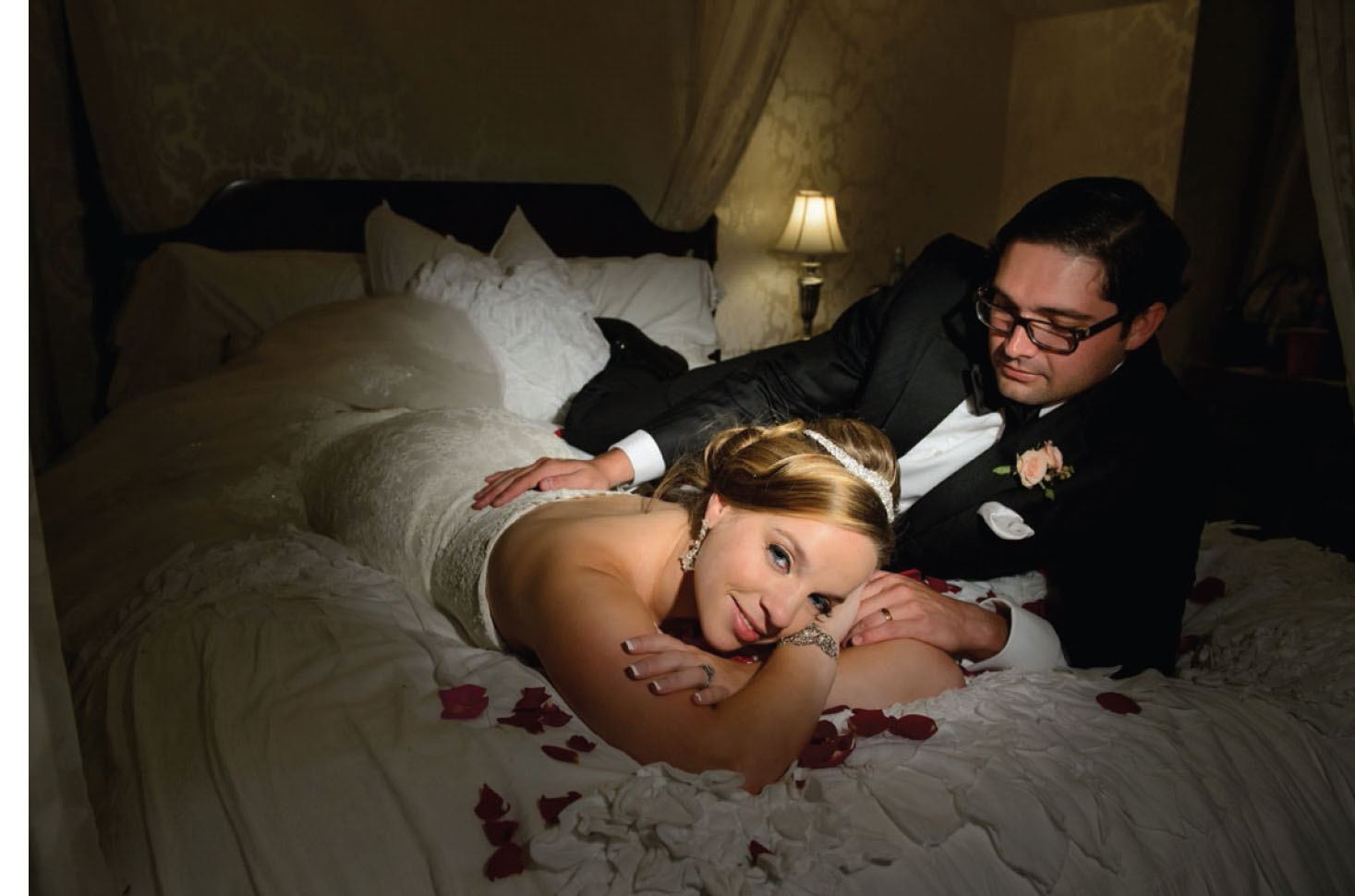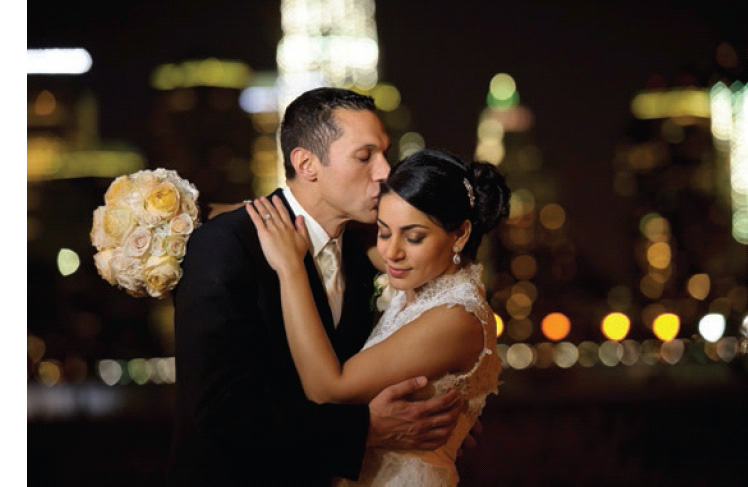Photographer: Neil van Niekerk
Video lights have become an increasingly popular choice for wedding photographers in recent years. Neil van Niekerk includes a video light as part of his standard gear for every wedding and uses it masterfully to produce some very dramatic looks.
Small Light, Hard Light
Compared to the light from a softbox, a video light’s beam is small and hard, producing a lot of contrast and defined shadows. This makes for decidedly dramatic lighting, but it also presents some challenges when it comes to ensuring that the light is actually flattering on the subject.
Because it is a small source, any mistakes made when positioning a video light will be painfully obvious. That makes this a good time to work with a light stand—or an assistant you trust to follow your directions precisely.
“Keep the shadow under the nose. You want to create butterfly or loop lighting . . .”
Watch the Nose Shadow
The key to using a video light successfully is being very careful with its angle and height relative to the subject’s face. “You don’t want the light too high or too far to the side,” says Neil. “What you want to look at is the nose shadow. Keep the shadow under the nose as much as possible. You want to create butterfly or loop lighting—not Rembrandt lighting, where the shadow of the nose across the cheek will look like a smear.” If the light is too high, you will see unflattering shadows under the eyes.

The bride was lit with a Lowel ID light positioned to create loop lighting. The beam was so narrow that the groom’s face had to be dodged slightly in postproduction to bring him into a more balanced tonal relationship with the bride.
For this mixed-light portrait (note the coloration from the room’s uplights), Neil placed a video light to camera left for dramatic shadows and beautiful light on the bride’s face.
Which Face Are We Lighting Here?
With a light source that requires such careful positioning relative to the subject’s face, what happens when there are two people in the shot? Neil says you should always make lighting the bride your primary concern. “The light has to look more fetching on the bride. With the harder light, it is less of a concern if the groom’s face falls a little bit into shade. The bride has to look good,” says Neil.

To photograph the couple against city lights, Neil positioned an incandescent video light on a light stand. Notice the exquisite lighting on the bride’s face.